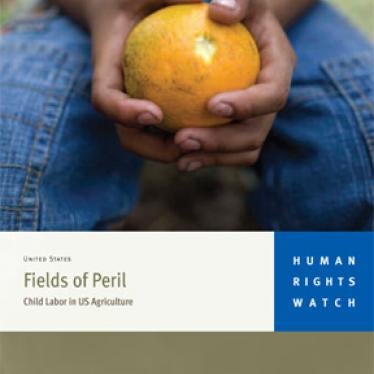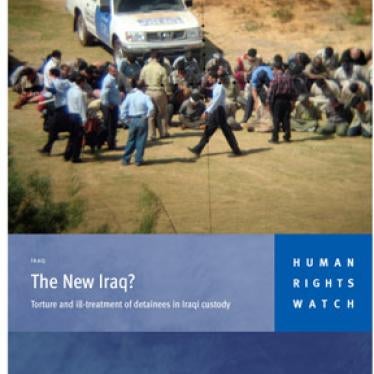In a few weeks, children as young as 12 will start leaving schools in south Texas to work in the summer harvest, taking on the difficult and sometimes even dangerous work of picking fruits and vegetables. Nationwide, hundreds of thousands of kids this year will cut the roots off onions, hoe cotton, climb tall ladders to pick oranges and apples, and drive tractors. If the past is a guide, some will be injured, some will be maimed, and some will die.
It could have been different in 2012, with a proposed set of safety regulations aimed at minimizing harm to children hired to work in the fields. But in a heartbreaking about-face, the Department of Labor April 26 withdrew new rules that would have updated the decades-old list of tasks considered hazardous and therefore off limits for hired farmworkers under age 16.
Agriculture is the most dangerous work open to children in the United States, where 12- to 16-year-olds—and on small farms children of any age—can be hired. According to government figures, 16 children under 16 were fatally injured at work in 2010; 12 of them worked on farms. Thousands more are injured each year. I’ve interviewed dozens of youths who worked as children across the country. They describe operating heavy machinery, including tractors; falling from ladders; being exposed to pesticides and suffering symptoms of poisoning; working in extreme heat to the point of dehydration; and suffering from nicotine poisoning (aka green tobacco sickness) from picking tobacco. Wyatt Whitebread, 14, was employed in Illinois when he suffocated in a grain silo in 2010. Under the Fair Labor Standards Act (FLSA), the US Department of Labor must determine what jobs are so hazardous they are off limits for children under 16 paid to work on farms (they don’t apply when the business is owned or operated by their parents). Current rules, drafted decades ago, prohibit operating certain equipment, working with some animals, working from a ladder over 20 feet high, and applying the most toxic chemicals. The new restrictions, based on expert research from farm safety and health experts, would also ban additional heavy machinery, working in silos and grain storage facilities, handling all pesticides, and working in the production of tobacco, among other things. These updates make sense, based on new equipment and a better understanding of children’s vulnerabilities, especially to pesticides.
Yet when the Labor Department introduced the proposed rules in September, several members of Congress, including Senators John Thune and Jerry Moran and Representative Tom Latham, claimed they would hurt family farms and agricultural training, and introduced bills to block the new rules. The pressure on the department—and the misinformation—was intense. The claims were just wrong: the proposed rules didn’t apply to family-owned or -operated farms and in any case, rural communities don’t depend on children being able to do jobs likely to injure and kill them. Children could still work on farms—they just couldn’t perform the most dangerous tasks. Job training shouldn’t require children to risk their health and their lives.
Child labor laws are already far more lax in agriculture than in any other sector. US law allows 16 and 17-year-olds to work on farms under hazardous conditions, while the minimum age elsewhere is 18. Kids under 14 can’t work at all, and those under 16 can work only three hours a day when school is in session. But on any farm, children can work at age 12, with no hourly limits outside of school hours. On a small farm kids of any age can work legally. This dangerous double standard between agriculture and other sectors is also discriminatory: 85 percent of farmworkers are Hispanic, and this group alone faces uniquely lower safety standards.
To make matters worse, existing regulations prohibiting hazardous farmwork for children are rarely if ever enforced. In 2010 the Wage and Hour Division of the Labor Department cited only three violations of agricultural hazardous orders, or 0.3 percent of the 1,064 hazardous occupation violations it found that year.
The Department of Labor, in withdrawing the rules, said it will work with the Farm Bureau and others who opposed the rules to develop educational programs to promote safe practices. But voluntary farm safety rules have been tried and have failed to keep children from dying at disproportionate rates. No one would accept voluntary safety standards for children working in factories or construction sites and we shouldn’t accept it on farms—at least not while agriculture accounts for so many preventable children’s deaths.
Zama Coursen-Neff is deputy director of the children’s rights division








